Boutique Marketpalace for Dog Lovers https://www.k9andcompany.com/
Don't wanna be here? Send us removal request.
Text
TOP 10 BEST WAYS TO EXERCISE YOUR DOG INDOORS
Throughout the year, especially as temperatures reach extremes in the summer and winter months, outdoor activities become more limited. During these seasons, it’s important to find new and creative ways to keep your dog active and healthy without subjecting them to extreme temperatures. Exercise is a crucial aspect of a dog’s overall well-being and helps prevent boredom, destructive behavior, and a host of health problems. Here are the top 10 best ways to exercise your dog indoors:
Hide and Seek: The classic hide-and-seek game is a great way to engage your dog’s mind and body. Hide treats or toys around your home and let your dog search for them.
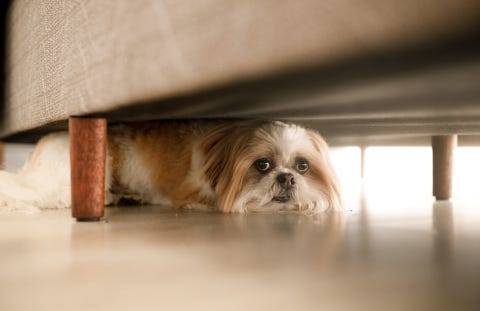
Agility Course: Create an indoor agility course using household items such as pillows, cardboard boxes, and chairs. This is a fun way to challenge your dog both physically and mentally.
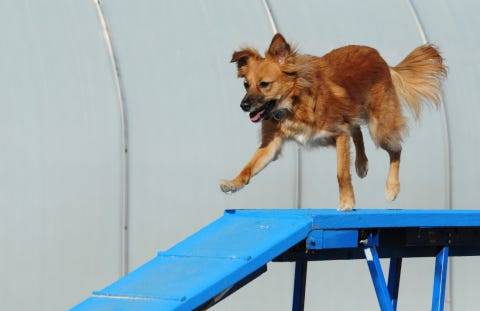
Tug-of-War: Tug-of-war is a great way to build strength and bond with your dog. Make sure to supervise the game, pay careful attention to your dog’s body language, and always have a designated tug toy to avoid destructive chewing.
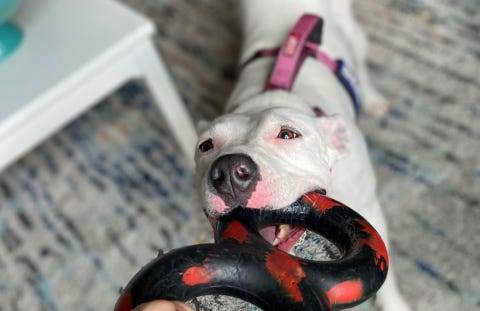
Stair Workouts: Stair workouts are a great way to increase your dog’s heart rate and build muscle. Start by having your dog run up and down a few steps at a time, gradually increasing the number of steps as they get stronger.
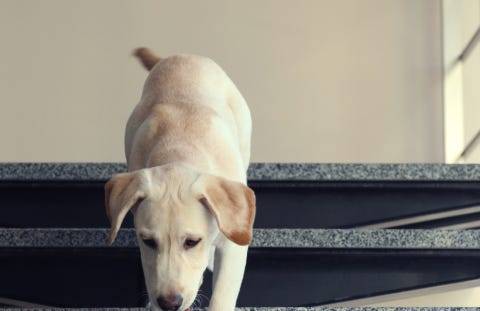
Indoor Fetch: Playing indoor fetch is a great way to keep your dog active and entertained. You can use a ball or a soft toy for this activity.
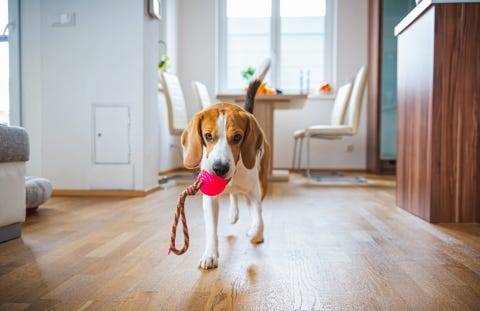
Sniffing Games: Sniffing games are a great way to stimulate your dog’s sense of smell and mind. You can hide treats or toys around the house and let your dog find them. Click here to learn more about the importance of mental stimulation and how to incorporate it into your dog’s life.
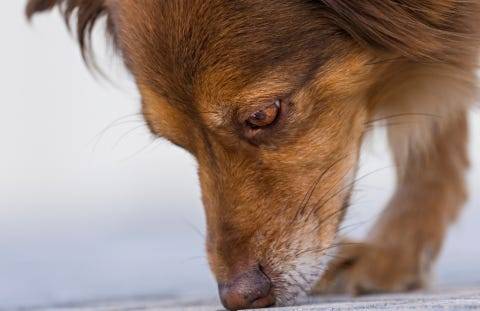
Treibball: Treibball is a fun and challenging game that involves your dog herding and pushing large balls into a goal. This is a great way to burn energy and improve focus and obedience. This indoor exercise may require a little temporary furniture rearranging, but getting them moving around is worth it!
Training Sessions: Regular training sessions are a great way to exercise your dog’s mind and body. You can work on obedience, agility, new tricks, and other skills. Here’s a bonus blog for ways to incorporate obedience training into your daily routine for those with a packed schedule.
Laser Pointers: Laser pointers can be a fun and engaging way to play with your dog. Just be careful not to shine the laser directly in your dog’s eyes
Indoor Walks: Indoor walks are a great way to provide exercise and mental stimulation for your dog. You can walk around your home or use a treadmill for this activity.
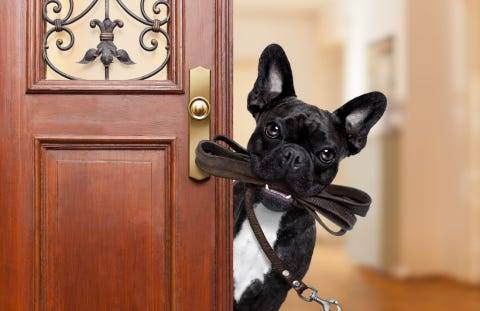
There are many ways to exercise your dog indoors. From classic games like hide and seek to new and innovative activities like Treibball, the options are endless. Remember to be creative, patient, and always supervise your dog during playtime.
Looking for more puzzles or dog accessories to keep your pup entertained? Check out K9 & Company’s website today for fun and engaging items for you and your dog!
0 notes
Text
CREATING A SAFE AND COMFORTABLE HOME FOR YOUR DOG
As a dog lover, you know that your furry companion is more than just a pet — they’re a family member! And just like any other family member, you want to ensure they feel safe, comfortable, and loved in their home. Creating a safe and comfortable home for your dog is crucial to their health and happiness. But where do you start? In this blog post, we’ll dive into tips and tricks for making your home the perfect haven for your furry friend.
Buy the Right Gear
One of the first steps to creating a safe and comfortable home for your dog is ensuring you have the right gear for them. This includes, at a minimum, a comfortable bed, accessible food and water bowls that are the appropriate height to prevent neck strain, and a leash and harness for safe walks. Additionally, if you live in an area prone to harsh weather, consider investing in dog booties to protect their paw pads and a winter coat or rain jacket to help keep your dog comfortable and protected in inclement weather.
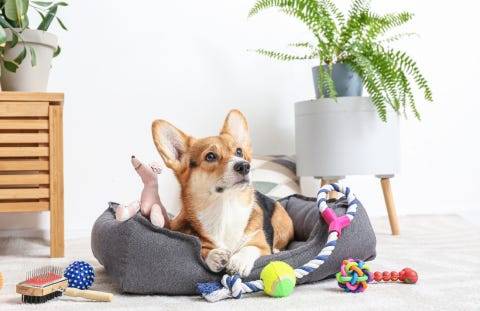
Dogs are notorious for their love of playtime. Providing plenty of toys helps keep them entertained and reduces destructive behavior by providing them with an appropriate outlet for chewing and more. Choose toys that fit your dog’s size and chewing habits to avoid choking hazards. Additionally, rotating your dog’s toys can help keep things interesting and prevent boredom and the accompanying destructive behaviors.
Make Your Home Safe
As much as we love our furry friends, they can be mischievous and deeply curious. Dog-proofing your home can help prevent accidents and injuries, preventing pain and suffering for both you and your pet. Always store hazardous cleaning materials or chemicals in locked cabinets, keep sharp objects out of reach, and ensure any plants are dog-safe. Additionally, be aware of common choking hazards and items your dog is prone to snag (e.g., socks, kid’s toys, etc.). If you own a home with a yard, ensure you reduce risk there too! Some dogs chew on rocks or eat plants that may be dangerous to their health; others are prone to digging under fences and escaping. One way to help dog-proof your home is by walking through your space at their level and thinking like your pup, then taking the proper precautions in response.

Dogs are naturally active creatures and require daily exercise to stay healthy and happy. Part of providing them with a safe and comfortable home is ensuring they are mentally and physically stimulated. Don’t worry — that doesn’t require a yard, just a commitment to get moving! Going for walks or runs, playing fetch, or taking them to a dog park are great ways to keep your dog active. Mental stimulation, such as puzzle toys or obedience training, can help keep your dog sharp and engaged when walks aren’t enough. A tired dog is a happy dog and is also more likely to stay out of trouble within their home space.

Proper nutrition and feeding are essential to making your home safe and comfortable for your dog and their overall health and well-being. Dogs who trust they don’t have to fight for their next meal develop deep loyalty and are more relaxed in their environment. Be sure to choose a high-quality dog food that meets their nutritional needs — consult a veterinarian for suggestions on high-quality dog food and appropriate portion sizes if you’re unsure.
Additionally, ensure that your dog has access to fresh water at all times. Give treats and chews in moderation, and always supervise your dog when they’re snacking. And finally, be mindful of your dog’s food allergies, if any, when buying new treats.
Creating a safe and comfortable home for your dog is essential to their overall happiness and health. Ensuring they have the right gear, plenty of toys, a safe environment, opportunities for exercise, and proper nutrition are all vital components. By following these tips, you can provide your furry companion with the perfect haven they deserve. Remember, a happy dog equals a happy family!
While you’re setting up your home for success, be sure to check out everything that K9 & Company has to offer, both for pets and their paw-rents.
0 notes
Text
POTTY PROBLEMS NO MORE! THE ULTIMATE GUIDE TO SUCCESSFULLY POTTY TRAINING YOUR PUP
Are you ready to say goodbye to pesky potty problems and ensure your pup is trained correctly? Whether you are a new dog owner or have been raising dogs for years, this guide has essential tips and tricks to ensure you and your pup succeed on your potty training journey.
Getting to Know Your Dog
Before you start potty training your pup, it’s essential to get to know them and develop a thorough understanding of who they are. Dogs have unique personalities just like us, so paying attention to their behaviors is essential to building a successful relationship and a better training experience.
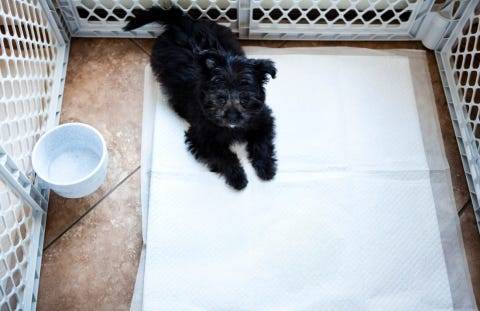
Preparing for Potty Training Success
When preparing for potty training boot camp, remember the basics! Stock up on items like pick-up bags, training treats, indoor crate pads or absorbent mats, and cleaning supplies — they’ll become essential during this process. Then, identify a designated potty spot outside in which to practice consistently.
Once your space and supplies are ready, it’s time for the last item you’ll need: time. Get ready to develop a schedule and routine for yourself and your puppy to ensure that they can consistently practice going potty in the appropriate location.
As a bonus tip, remember that crate training and potty training can go hand-in-hand — here’s a refresher on crate training that may supplement your potty training success.
Housebreaking 101
It’s time to implement potty training essentials into your routine, and the key points to remember are anticipation, consistency and scheduling, and positive reinforcement.
Anticipation
As an owner, it’s important to anticipate accidents and adequately deal with the aftermath when they occur. If you see your pup squatting down to potty, promptly take them outside and try not to let them do their business in the house. If you do this every time, they should eventually pick up the pattern!

Consistency and Scheduling
Setting up a consistent environment conducive to learning is an integral part of successful potty training for your pup. Deviations from routine can deter your pup’s progress, so it’s crucial to create a routine for going to the bathroom and ensure your dog follows it with few deviations.
When deciding your dog’s potty schedule, be realistic! There are no hard and fast rules for when to take your dog out; the most important part is consistency. For example, you could take your pup out ten minutes after every meal or every other hour until you understand when the urge strikes. Whatever you decide, follow your schedule daily until you’ve got it down pact.
There are supplemental items that may make potty time easier to communicate, such as doorbells that a dog will nudge when he needs to go out. You may consider that as you get more advanced in your training, but it’s best to start simple!
Positive Reinforcement
Positive reinforcement is one of the most effective ways to train a dog, and potty training is no exception. Once you determine the type of motivation that works best with your dog, you can hone into the nitty gritty of potty training. When they do go potty outside, throw your own potty party! Celebrate the heck out of a job well done with treats, praise, and anything that lets them know they did right.
Maybe you’ve heard the (now antiquated) advice to “rub their nose” in their mess –it doesn’t actually accomplish anything, just instills distrust in your new puppy. Remember: be pawsitive for stellar results.
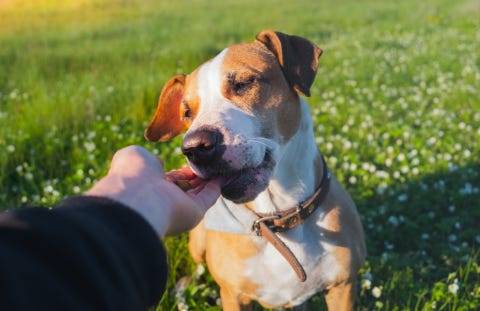
The Final Steps
Successfully potty training your pup is achievable with guidance and patience. Learning your pup’s unique personality, stocking up on the right supplies, and creating a positive and consistent environment can make housebreaking a breeze. Finally, continually reinforce desired behavior over time to ensure lasting results. With practice, you’re sure to have a potty-trained champion!
Are you looking for your pup’s perfect accessories? Don’t forget to check out everything K9 & Company offers you and your beloved new pet.
0 notes
Text
THE POWER OF PUPS: HOW DOGS IMPROVE OUR MENTAL HEALTH

Unconditional Love & Companionship

Increased Physical Activity
Even the laziest pups need exercise, and as their owners, we have to get up and move with them! Even a short walk around the block can improve your mood and provide a positive mental boost. Being active releases endorphins in the brain, which can help reduce symptoms of anxiety and depression. Regular exercise can also improve sleep, which is crucial to maintaining good mental health.

Socialization Opportunities
If you’ve ever walked a dog in a public space, you know they can be a great conversation starter. Dogs are natural icebreakers and can help facilitate socialization with other pet owners or passersby. Socialization is not only important for dogs but is also a key piece to well-rounded mental health for humans, as it helps us form connections with others and combat feelings of loneliness and isolation. Plus, seeing how happy our pups make other people can give us a boost of happiness too!

Stress Relief

Emotional Support
Dogs can be an incredible source of emotional support for individuals struggling with various mental health issues. The presence of a dog can help reduce symptoms of anxiety, depression, and PTSD and even help people with ADHD or autism.
In many states, the law legally recognizes emotional support animals and implements certain protections for them in public places. Suppose you’re struggling with your mental health and are considering getting a dog for emotional support. Researching the legalities and benefits accompanying owning an emotional support animal is important. It is also helpful to talk to a mental health professional and specialist for support to make the best decision for yourself and your future pup.
Conclusion
For many, dogs are our best friends, and it’s no surprise that they’re becoming increasingly recognized for the mental health benefits they provide their humans. From companionship and exercise to socialization opportunities and stress relief, our pups offer us incredible support and love. If you’re a dog owner, take a moment to appreciate how much your furry friend is doing for your mental health, maybe with an extra cuddle or treat! And if you’re considering getting a dog, know you’re investing in your well-being. Dogs are amazing creatures, and we’re lucky to have them!
Looking for a way to show your pup some extra love for supporting your mental health? Why not thank them with a gift from K9 & Company’s expansive offerings today?
0 notes
Text
NO MORE RUFF DAYS: ADVICE ON DEALING WITH COMMON BEHAVIORAL ISSUES IN DOGS

Excessive Barking

Destructive Chewing

Separation Anxiety

Leash Reactivity

Aggression
Aggression towards people or other dogs is a serious behavioral issue that requires immediate attention from a professional dog trainer or behaviorist. Aggression can be triggered by a variety of factors, including fear, territoriality, or resource guarding, depending on your dog and their unique history. To address aggression, it’s important to work with a professional who can assess the root cause of the behavior and develop a customized training plan to manage and overcome it.
In conclusion, dealing with common behavioral issues in dogs can be challenging, but with the right approach and expert advice, most problems can be successfully resolved. By identifying the root cause of the behavior and using positive reinforcement training techniques, you can help your furry friend overcome behavioral issues and enjoy a happy, healthy life with you. Remember, patience, consistency, and love are the keys to success when addressing behavioral issues in dogs.
Don’t forget to check out K9 & Company’s website to stock up on all of your pet needs today!
0 notes
Text
TECHNIQUES FOR MANAGING NIPPING AND BITING

Identifying Common Causes of Nipping and Biting

Understanding Your Dog’s Body Language to Recognize Warning Signs
All dogs can exhibit nipping and biting behavior. If you feel your dog is exempt, remember that even the most laidback pup can have the occasional episode depending on the situation. Like humans, every dog has a patience limit when exposed to certain stimuli.
To avoid injuries and better communicate with your dog, it’s essential to learn how to read and understand their body language so you can recognize any warning signs they may be sending. Suppose your pup is showing signs of stress like lip-licking, a tense stance, or raising their hackles. In that case, it’s best to immediately step away from the situation and wait until it’s safe to return (this is applicable both when dealing with your dog and when encountering an unfamiliar and aggressive dog).
Check out this blog for additional insights on reading dog body language.

Developing Strategies for Redirecting Attention Away From Nipping and Biting
If you’re dealing with a puppy or young dog exhibiting nipping and biting behavior, remember, first and foremost, that this is not an uncommon issue. They’re likely to grow out of the behavior with the proper guidance. Start by developing effective strategies to redirect attention away from nipping and biting. Focus on rewarding desired behaviors instead of emphasizing negative ones. Owners who ignore (i.e., do not reward with attention) nipping and biting behavior and instead reinforce positive behaviors (e.g., sitting still or retrieving a toy) can help curb the negative behavior naturally. Additionally, you can try redirecting your dog’s attention with a toy when they start nipping and biting, giving them a new focus for their energies other than the unwanted behavior.
If dealing with an adult dog, you might have to take extra steps to curb the behavior, but the principles are the same. Use positive reinforcement, redirection, etc., to mitigate nipping and biting behaviors. You can also try practicing other training commands, like recall, to ensure they keep their attention on you, not external stimuli that may trigger nipping behaviors.

Utilizing Positive Reinforcement and Avoiding Aversive Techniques
Generally, all training is best done with positive reinforcement, such as treats and praise. These techniques help establish trust between pup and pet parent while teaching consistency and shaping better behaviors in our four-legged friends. Once dogs learn the connection between a reward and positive behavior, they’re more likely to exhibit positive behavior instead of negative behavior, which does not produce a reward.
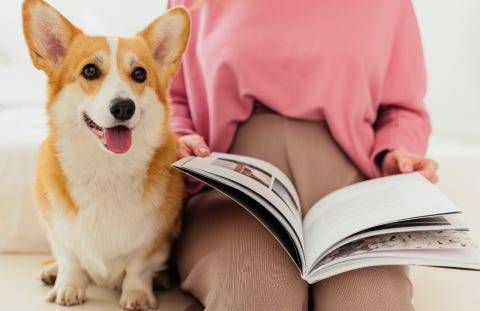
Establishing Boundaries with Your Dog Through Training Exercises
Training is for life; practicing tricks and commands can help remind your pup of their expected behavior and boundaries. With regular, practiced exercises, you can establish and reinforce your pup’s nipping and biting boundaries. For example, try setting up situations where you will naturally reward desired behaviors (like playing fetch or receiving treats) and discourage negative behaviors (such as lunging at people). Reinforcing the basics keeps your dog mentally and physically stimulated and can help distract from nipping and biting tendencies. Such practice can help create a trusting bond between you and your pup and train them that no positive reward comes from acting aggressively.

Managing nipping and biting behaviors may seem difficult initially, but with consistent practice and patience, you can help redirect your dog’s focus to something more positive. Remember that rewards like treats and praise can go a long way toward reinforcing good behavior in any situation. Also, it is important to establish boundaries with your dog; don’t be afraid to set limits consistently, firmly, and gently. If you remain patient and diligent in managing these problems, your pooch will soon understand what’s expected of them, and you can have a nipping- and biting-free companion.
Looking for gear to help you on your training journey? Explore all of K9 & Company’s products now!
0 notes
Text
ADOPTING VS. BUYING A DOG: PROS AND CONS
0 notes
Text
THE IMPORTANCE OF SOCIALIZATION FOR DOGS
0 notes
Text
STOP YOUR DOG FROM GROWLING OVER FOOD WITH THESE TRAINING TIPS

Understanding Why Your Dog is Growling
Identify the cause of the behavior so you can address it properly.
It can be incredibly frustrating when your dog starts growling over food. Unwanted territorial behavior like this is unsettling, so identifying and addressing the underlying cause is essential. When considering the “why” behind resource guarding, ask yourself a few basic questions: Is your pup feeling possessive? Are they uncomfortable around other people or animals in the vicinity? Are they a rescue with a history of fighting for meals?
Consider your dog’s past and the atmosphere you create during meal times. It could be that they feel they need to compete with housemates to have a proper dinner. Understanding why your dog is growling is the first step to adequately tracking and managing the behavior. With patience, consistency, and a good plan of action, it’s possible to help your pup learn mealtime manners.
Establish Rules and Boundaries
Clearly define what your dog is and isn’t allowed to do regarding food.
Establishing rules and boundaries when it comes to food can be key in stopping your dog from growling. Always be clear and consistent when it comes to what your pup is and isn’t allowed to do regarding food. Don’t make these rules too complicated, either. Examples of easy rules you can follow:
No stealing scraps from the kitchen counter.
Eat only near designated feeding areas.
Do not rush at food when it is provided.

Don’t Reward Negative Behavior
If your dog growls, don’t give them any attention or treats, which could reinforce the unwanted behavior.

Use Positive Reinforcement
Give your dog treats or praise when they show non-aggressive behavior around food.
If your dog has a habit of growling over food, there are a few key training tips that you can use to turn their behavior around. The most beneficial strategy is to reward them with treats or praise when they act non-aggressively around food. This positive reinforcement will help train your pup to associate good behavior with rewards and significantly reduce the chance of unsavory incidents.
Avoid Situations that Make Your Dog Uncomfortable
If possible, avoid putting them in situations where they feel anxious or threatened during mealtime.
Prevention is key when avoiding situations that make your dog uncomfortable. If it can be helped, try to keep them out of any environment that makes them anxious or threatened, especially when they are about to eat a meal. (Here’s a refresher on dog body language if you need help decoding when your dog is anxious). We know this isn’t always feasible, so if they end up in an uncomfortable situation and start growling, try calming them down. Redirecting a dog’s attention to something else until the environment becomes safer is an excellent option in these scenarios. With enough positive reinforcement and training, you can teach your pup how to avoid the need for growling and let you know how they feel through alternative behaviors.
Seek Professional Help if Needed
Consider working with a trainer if you are struggling to train your dog on their own

It is important to remember that every pup is different, and their response to external stimuli can vary greatly (including with resources like food!). With a bit of patience, persistence, and, most importantly, positive reinforcement, your pup can learn acceptable behavior for mealtime. Additionally, don’t forget to watch for signs of stress or fear in your dog, as they could contribute to the growling and protective behaviors. If all else fails, consider contacting a professional canine behaviorist who can help assess the situation and provide tailored techniques for you and your pup.
Are you looking for more resources for your particular pooch? Check out all of K9 & Company’s offerings for all of your mealtime needs and more today!
0 notes
Text
THE PROS AND CONS OF ADOPTING A SENIOR DOG
Original Source : https://www.k9andcompany.com/blogs/blog/the-pros-and-cons-of-adopting-a-senior-dog

Pros
Some of the biggest pros of adopting a senior dog are that they are often already trained, settled into their personalities, and are generally more well-behaved than a younger dog or puppy. They have typically passed the “chewing everything in sight” phase and have a better understanding of boundaries within a household. Additionally, their personalities may not change as much as a developing puppy, and they are generally more relaxed and lower maintenance. Senior dogs also tend to bond quickly and deeply with their new owners, which can be incredibly fulfilling.
A senior dog is also usually a good fit for an apartment and/or city living. When it comes to city-dwelling, senior dogs can be a great choice as they tend to be more relaxed and have lower energy than puppies and younger dogs. They also have a more calm and relaxed attitude, which can be helpful in an urban environment with lots of stimuli and opportunities for a youthful reaction.

Considerations

Senior dogs may also need help adjusting to a new home and environment. They may be more set in their ways and struggle with adapting to routine or changes in their living situation. These challenges can be overcome with patience, kindness, and positive reinforcement. Resources, including blogs about resocialization, are found frequently in this post-pandemic world, mirroring some issues a new senior dog owner may face.
Ultimately, the decision to adopt a senior dog should be based on the individual dog and its compatibility with your lifestyle. If you’re willing and able to provide the extra care and attention that a senior dog may need, the rewards of adopting a senior dog can be immeasurable. Make sure to visit a few shelters or look at local rescues site to meet some senior dogs before deciding. You never know; you might fall in love with a senior pup who will steal your heart!
In Conclusion
Adopting a senior dog can be a wonderful and rewarding experience, but it’s important to understand the pros and cons before deciding. When you make an informed choice, and with the proper care and attention, a senior dog can be a loving and loyal companion for many years.
Ensure you have everything to set up a senior dog space in your home. Check out all of the offerings available at K9 & Company today!
0 notes
Text
TIPS FOR ADDRESSING UNWANTED BARKING
Original Source : https://www.k9andcompany.com/blogs/blog/tips-for-addressing-unwanted-barking
Sometimes dogs bark for no apparent reason, which can be incredibly frustrating. Nobody understands this better than fellow dog owners. While barking is a natural way of communication for them, excessive barking can become annoying and disruptive to you, your family, and your neighbors. If your pup’s vocalizations are getting out of hand, there are methods that may help reduce the unwanted barking. The following blog explores why your dog might be barking so much and practical tips that may help curtail such behavior. Read on to learn how to curb the noise and create a more tranquil home atmosphere!
Identify the Reason Behind Your Dog’s Barking
Is it boredom, fear, or something else entirely?
Excessive barking can be aggravating, but it is often just your pup’s way of communicating something to you. Step one in curbing this unwanted behavior is to identify what the root cause may be. Is your pup bored? Lonely? Anxious or scared? Perhaps they are feeling something else entirely? When determining the root cause, consider what may be missing from your dog’s routine. If they need more exercise, try extending your walks an additional 20 minutes. Do they need more mental stimulation? Check out these tips on providing brain work into your dog’s day to keep them tired. Is your pup lonely? Try setting up a doggy playdate or bringing them with you when running errands. Is your pup displaying signs of anxiety? Perhaps reinforcing crate training practices will help create a designated safe space for your dog to relax.

Train Your Dog
Practicing so your dog understands and obeys. basic commands such as “sit” and “stay”. can help break focus away from barking.
When tackling barking, revisiting training basics is an essential part of the process. Teaching and reinforcing basic commands such as “sit” and “stay” can help ease your pup’s barking when they are anxious or excited. It gives them a task, distracting them from what may be triggering their barking behavior. Of course, it takes patience and consistency from you both, but with some practice, you’ll be well on the way to minimizing unnecessary barks.
Teach Your Dog The “Quiet” Command
This is often useful when you need them to settle down.
Teaching your pup to respond to the “quiet” command can be incredibly useful when dealing with unwanted barking. It requires lots of dedication and positive reinforcement, so prepare your schedule and have special rewards for your dog as you practice! (We recommend speaking to a trainer or looking at YouTube videos for a good starting point for teaching this command).

Try Providing Alternative Activities
Chew toys, puzzle feeders, and interactive ball games are great options.

Leverage High Value Treats
When your pup stops barking, try offering him a high-value treat to reinforce the positive behavior.

With time and patience, you can help your pup break the habit of constant barking. With an arsenal of strategies like identifying root causes, training sessions, and positive reinforcement, you are well on your way to seeing results and living in a calmer, quieter home. If you’ve been experiencing more extreme cases of excessive barking, you may consider seeking additional help from a professional trainer or behaviorist. They may be able to help customize a strategy that works for you and your dog.
Need supplies for your training journey? Check out K9 & Company’s list of offerings today to set you up for success.
Read More interesting blog about Dog Training at: https://www.k9andcompany.com/blogs/blog/
0 notes
Text
Dog Travel Accessories
If you are looking for Dog travel accessories, K9andCompany is the best choice to meet your dog’s needs and keep them safe and happy throughout the journey. K9&Company is a premier provider of good quality dog travel accessories including Pet Carrier, Backseat Bench Cover, Pet Trolley and Pet Backpack etc designed to ensure comfort, safety, and convenience for your Dog. Check out our dog travel accessories at: https://www.k9andcompany.com/collections/travel-accessories
0 notes
Text
IS YOUR DOG CHOOSING WHEN TO LISTEN? TIPS FOR ADDRESSING SELECTIVE OBEDIENCE
Blog Source: https://www.k9andcompany.com/blogs/blog/is-your-dog-choosing-when-to-listen-tips-for-addressing-selective-obedience
Does it seem like your dog only listens when they feel like it? Are you exhausted from repeating commands only to be greeted with a blank stare? If that sounds familiar, take solace knowing you’re not alone: this is a very common behavioral issue in canines.

What is Selective Obedience in Dogs and Why Does it Happen
We know it can be frustrating when your pup barely gives you a passing glance after you’ve repeatedly called their name, or they ignore the commands you have worked so hard to teach them. While it may feel like your pet deliberately chooses not to listen, selective obedience often has deeper roots than we realize.

Taking Action to Address Selective Obedience
Now that you know why your pup might be selectively listening, it’s time to take action! Before working on your dog’s selective obedience, we recommend ensuring that the issue is not health-related, as many dogs may be using selective obedience to communicate an issue passively.
Once cleared by your vet, start by practicing commands or playing games and activities that encourage positive and rewardable behavior. For example, you might want to practice your dog’s library of tricks or even teach them a new one! Just don’t try and do them all at once; taking small and steady steps on this journey will ensure you and your dog succeed. So master one command at a time until your pup is an obedience extraordinaire!
Figure Out What Motivates Your Dog

Tips for Training Your Dog to Listen Every Time
Be prepared to be patient! Training your dog to listen every time can be difficult and frustrating, but it is well worth the effort. To maximize success, try establishing a consistent structure and plan for each session — set expectations for when to focus on training and then implement rewards accordingly when your pup listens. Remember that consistency is key. If you give a command expecting their attention, but they don’t listen until the sixth time you say it, don’t immediately reward them. Instead, make sure they provide the same obedience on subsequent attempts.
Avoid Negative Reinforcement

Establishing a Positive Reinforcement System

Final Thoughts
Addressing your pet’s selective obedience may feel daunting, but you can set your pup up for success with patience and consistency. Establishing yourself in a leadership role and taking the time to learn what motivates your dog will help give them clarity on when to listen. Focus on training commands (check out our blog on ways to practice commands HERE) with positive reinforcement so that listening does not become associated with negative consequences. Be consistent and take your time — soon enough, you’ll have a well-behaved pooch! Remember that training should be fun for you and your pup and is best done together as a team. Taking these steps can lead you toward an obedient, loyal companion who will be by your side for many years to come!
To know more about us, Kindly visit our website at: https://www.k9andcompany.com/
0 notes
Text
FOR THE LOVE OF DOGS…

Have you ever wondered why people love their dogs? Even celebrate their dogs by throwing birthday, or gotcha day, parties. Sometimes with little party hats strapped to their pooch’s head while serving up a bone-shaped cake with candles. It puzzles me when I meet people that question a pet parent’s complete devotion to their pooch. Clearly, they’ve never had a dog! My love affair with the cute canine set started early in life, and fast-forward to today where it has blossomed into designing items for dog lovers. People passionate about their pups are the type of people I want to know!
What makes dogs so great? They are devoted, loving, loyal, and oftentimes, silly creatures. With just a tilt of the head, they can give us the giggles. We can’t underestimate their ability to lift our spirits, nor undervalue their style of judgment-free love. A dog’s ability to provide humans with emotional support is unparalleled in the animal world. If you have a down day, your dog can lift you right out of it. In the last decade, there’s been a lot of research conducted on how dogs help improve our lives (source, source). Here are a few key benefits dogs give to their owners:
Heart health, including lower blood pressure and cholesterol levels.
An enhanced immune system with less frequent sick days.
Potential weight loss due to more regular exercise.
Stronger emotional wellbeing and connectedness.
Meaning and purpose in daily activities.
Improved social life.
People love their dogs so much that when faced with a choice of leaving during an evacuation or staying because of a dog, pet parents often chose to forego their safety and stay behind. This was proven during Hurricane Katrina, and more recently in the California flash fires. Recognizing this, FEMA directors now include pets in disaster preparedness plans (here are some tips). This is how much we love our dogs, and all of us at K9 and Company get it. We love all dogs like they are our own. And it shows in everything we do. Whether you’re a “Dog Mom,” or Pitty lover, you are our kind of people!
We were so inspired by last weekend’s news story of a blind man, Thomas Panek, and his dogs making history. Panek, his personal guide dog Gus, and two trained guide dogs, Westley and Waffles, all yellow Labs, completed the New York City half marathon. In less than 2 and ½ hours, if you can believe that! That’s true dedication and devotion, on everyone’s part. That’s what we dig about dogs. They get joy out of doing things with humans, like taking turns jogging 13.1 miles to help a man compete in a long-distance race.
When humans first started domesticating dogs I’m sure we didn’t think, “wow, wait until they have us waiting on them hand-and-paw.” But look at us now! What seemed to start out as a reciprocal exchange between two very different beings, has now turned into a relationship based on devoted love. It really doesn’t make a lot of sense, but love often doesn’t. Hearts have a way of opening up to possibilities. Dogs are a lot like hearts that way.
How can we thank dogs for all that they do for us? Sure, we feed them and provide fresh water, and go on daily walks. But what else can we do to let them know how very special they are to us? Celebrate them! Compared to humans, dogs have a much shorter lifespan. So don’t hesitate to celebrate each birthday and every gotcha day. And any other day you feel like making special for your pup. Because they make every single ordinary day special for us. Heck, they make us feel that we truly are special.
Dogs have learned, over time, to watch us for cues of happiness, sadness, hunger, and playfulness. They’ve learned how to gauge what we’re going to do by our body language, and every small move we make with our face, including our eyes. Dogs respond according to our movements, and it’s in these initial exchanges that the human-animal bond begins. The more time your dog spends with you, the better he or she knows you and can give you love when you need it, make you laugh when you’re in the mood, and snuggle up for bedtime with you the same time every night… Even though they don’t know how to tell time! This is how connected dogs are to us.
While I’m not too sure we deserve dogs, I’m so very grateful to have them in our lives. The lessons they teach us, the joy that they bring into our lives, and the memories we make with them, are truly a priceless gift. Yes, it’s easy to understand why humans love dogs so much — because they love us, unconditionally.



0 notes
Text
Buy Dog Blankets — Buy Pet Blankets for Dogs

Introducing K9 & Company, your ultimate destination for premium-quality pet blankets designed specifically for dogs. We understand the importance of providing the best comfort and warmth to your furry friends, and our dog blankets are designed with their well-being in mind. With a wide range of styles, sizes and colors available, you can find the perfect dog blanket to suit your pup’s unique needs and preferences. Our blankets are made from excellent materials that are not only soft to the touch but also durable, ensuring they stand up to everyday wear and tear. Wait no longer — visit K9 & Company’s website: https://www.k9andcompany.com/collections/accessories to buy the perfect pet blanket for your dog.
0 notes
Text
7 MUST-HAVE SUMMER ACCESSORIES FOR YOUR DOG!
The summer gives us so many opportunities to take our dogs with us on our adventures. Camping, hiking, or boating trips run a lot smoother when you and your dog are less stressed out. When you travel outside the house, you have to think about all of the logistical things. How do to transport their food and water? Where will they relieve themselves? How do to protect your dog from any harmful incidents? Check out these affordable products that will hopefully end your worries, so you can get ready for the best summer yet!
1) 2 in 1: Water and Kibble Travel Cup
There are a few different types of containers that can hold both food and water for your dog. These portable containers are great for a day hike or a trip at the beach where you may need to feed your puppy lunch. Make sure that the container you purchase is leak-proof and BPA free. There are also a few upscale, more expensive stainless steel bowls that stack on top of each other as well.
2) Artificial Grass
Whether you are on a boat trip or road trip, sometimes there is not a good place for your dog to go to the bathroom. But, now there are cut-to-length pieces of artificial grass that you can use for a potty spot. It may take a couple of weeks to train your dog to go on the faux grass, but trust me — it can be worth it in the long run. Try placing the turf on your dog’s favorite spot to potty and reward them when they go to the bathroom close to it, and then eventually on top of it outside. Then, move the turf inside your van or boat and try the same method. You can easily pick this up at your nearest Lowes or Home Depot.

Image by HIllye from Pixabay
Even if your dog is born for swimming, it is important to train them to wear a life vest. Your dog can get tired from swimming far out in the deep water, and may not have the energy to get back to shore. Safety comes first, but it is a good thing fashion comes second for life jackets. There are so many fun, cute designs to test out on your dog. Make sure you measure your dog correctly to get the right size.
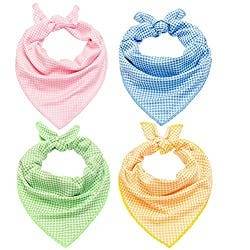
The cooling collars are great for breeds that get overheated easily in the summer. This accessory fights fatigue and prevents heat stroke as well. If your pup has a double coat, this may be the perfect collar to invest in for the beach, or just simply for hot days outside in the backyard during a BBQ. You can even insert ice cubes in some of these collars throughout the day, instead of waiting for it to get cold again in the refrigerator. Remember–never put a frozen collar directly against the skin, as it can give them freezer burn. If the collar is not enough, there are also jackets to cool down the entire body as well!
ALL FOR PAWS Chill Out Dog Ice Bandana
Adjustable Dog Cooling Bandana
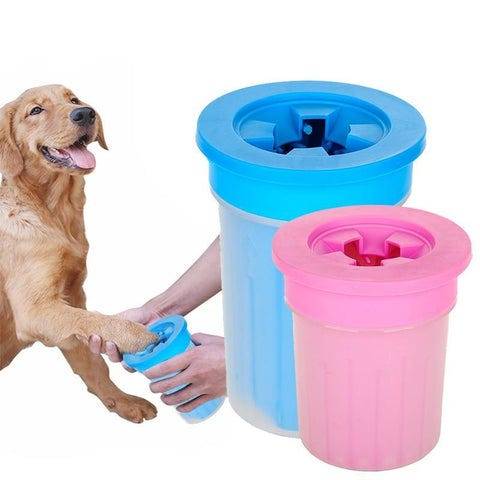
The paw washer is great for removing dirt to prevent your house from being covered in paw prints after a muddy hike. But, this tool is also very useful for dogs that struggle with allergies or itchy feet. Just like humans, dogs can be allergic to grass or pollen. If you wash the allergens off of their feet before they come inside, this may reduce their instinct to lick them, which causes hot spots. This affordable accessory could save you hundreds at the vet office, and it comes in all different sizes. Do not instantly assume your dog will stick their paws in the washing tube. Make sure you gradually train them to accept it, rather than force them to use it.
Dexas MudBlaster Portable Dog Paw Cleaner
Tinioey Dog Paw Cleaner
6) Water Boots
Another accessory to prevent paw injuries are water boots. Many beaches and rivers have rocks and sharp pieces of wood that could pierce their skin. Paw injuries can take months to heal, and they miss out on some many adventures. Make sure the boots fit snugly and gives them traction to move about. Again, teach your dog to accept the boot with positive reinforcement. Do not assume they will love them at first sight.

Grooming is especially important in the summer for long haired dogs. If you do not want to pay for a professional grooming session, a de-shedding brush is a great start. Make sure you are removing the undercoat in the summer to let the skin breathe and prevent heat stroke. Brushing is also great for improving their blood circulation and preventing any hot spots. You will spend less time vacuuming and more time enjoying a clean home.
SleekEZ Original Deshedding Grooming Tool
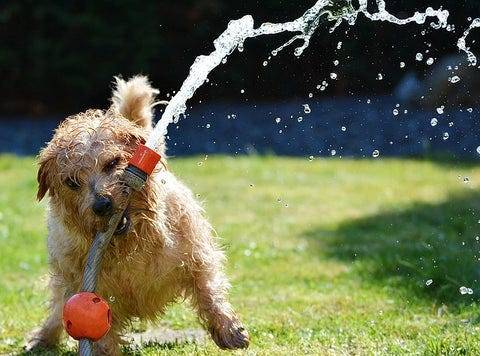
You do not have to purchase all of these products to create a successful summer. Your dog will thank you even if you just fill a kiddie pool full of water! Summer is arguably the most dangerous season for dogs, so watch for any signs of stress or heat exhaustion while on your journeys, and you will be good to go anywhere you bring your furry friend!
0 notes